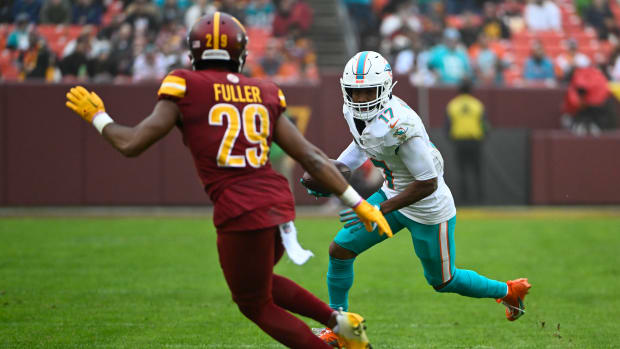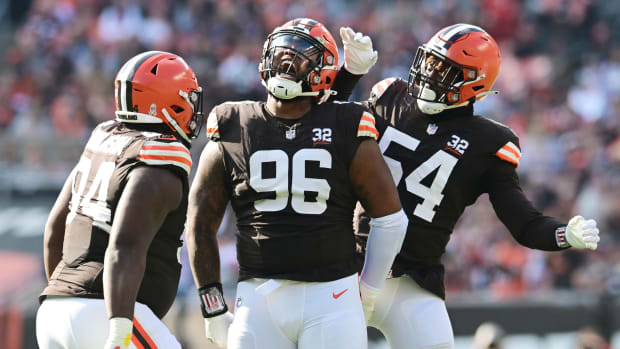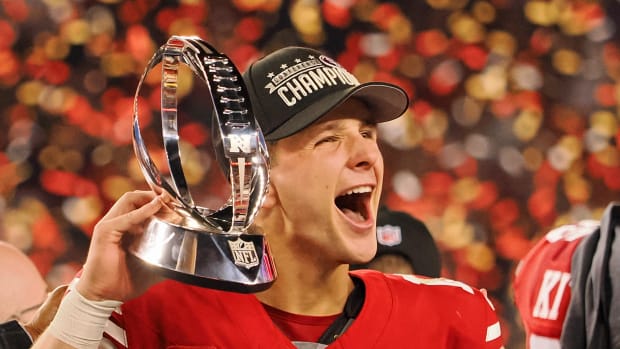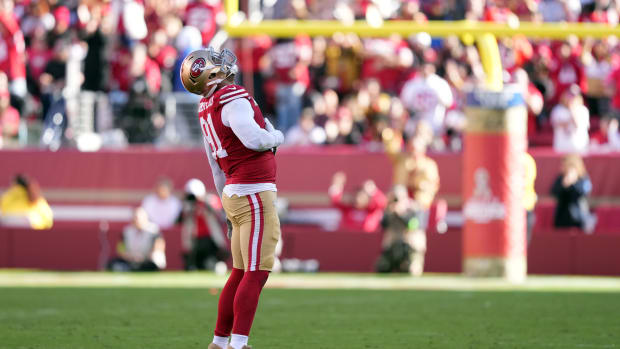Have the 49ers Set a New Standard at Running Back?
What made the San Francisco 49ers such a powerhouse in 2019 was their complimentary football. All facets of their team came together in almost every game, which is why they were so successful.
One of the more consistent departments on the team was the running game. The 49ers' backfield would gash the opposing defense practically every week. Best part of all was that it never matter who was running the rock. Raheem Mostert, Tevin Coleman and Matt Breida each presented themselves capable of a monstrous gain. That is why each of them rushed for over 500-yards.
Such a feat was only accomplished by the 49ers and the Balitmore Ravens, who had the luxury of having MVP Lamar Jackson.
With the 49ers having three running backs rush for over 500-yards, it brings up the conversation of why teams should not pay top-dollar for a running back. That utilizing running style by committee is the ideal structure. It begs the question to ask: have the 49ers set a new standard at running back?
Solomon Wilcots of Pro Football Focus sure believes so in his latest article.
Last year Raheem Mostert, Tevin Coleman and Matt Breida fueled the 49ers’ offense and provided an A-rated return on investment. Instead of overpaying one “superstar” running back to carry the load, the Niners smartly divided the labor and the money between these three players. This method of running back by committee has become a prototype for today’s modern NFL backfields, and no team has done it better than Kyle Shanahan’s 49ers.
Running back by committee is definitely the new standard in the NFL, or as Wilcots puts it, "a prototype for today's modern NFL backfields." He is on the money with his assessment.
It is no secret that the running back position has become devalued in the last 10 years. The longevity of a career for a running back just doesn't behoove teams to invest so much in them. Yet, there are still plenty of teams out there that believe they need an exclusive workhorse at the position.
The New York Jets believed it was initially worth the money of signing Le'Veon Bell last offseason, and how did that workout? He ended up being mentioned in trade talks all season long.
That is why Wilcots brings up the cost factor of paying one running back. It is either you pay one player in the backfield to a loaded deal, or pay for overall quality talent on the offensive line. That is exactly what the San Francisco 49ers did. All three running backs salaries combined broke down to $2 million each. So all that stellar production came at insane value, especially with Mostert.
By investing in the offensive line, the 49ers aid not only the running game, but the passing game as well. The benefits of going all out on offensive line are exponentially better than a star running back. Arguing against hardly holds any weight because the 49ers just proved how effective it is. Even the Kansas City Chiefs are an example as they were scrambling all over the position last season.
It isn't just paying a running back top-dollar that is unwise. Drafting a running back in the first-round is starting to become avoided. There are just so many more impactful positions to take in that round than a running back. At least, a team can grab a player in the later rounds to scheme running lanes open with their well-paid offensive line.
So to reiterate, the answer is definitely yes to a certain degree. The 49ers didn't necessarily set the new standard. They just significantly reinforced the point that giving a running back a lucrative deal is not conducive to winning football.




